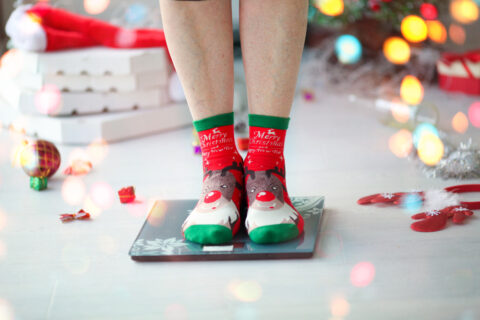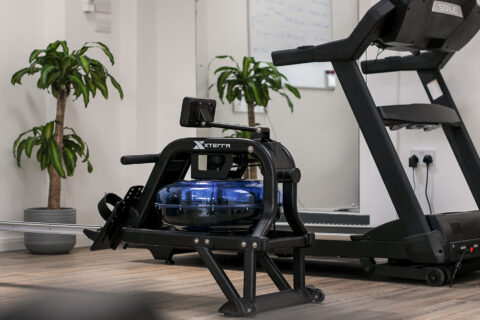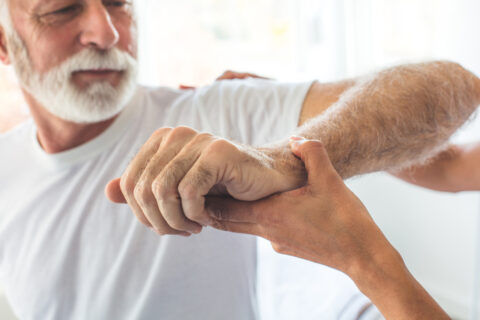The new year is fast approaching, which can only mean one thing; it’s almost time to jump back into a fitness routine. While many of us choose to begin in the new year, the safest and most effective method of forming a movement programme is to start small and work our way up. Therefore, instead of waiting for January 1st to roll around, the best time to ease yourself into regular movement is now. If you’re feeling anxious about starting, remember that gentle exercise and movement can help alleviate stress and anxiety symptoms.
One of the most common new year’s resolutions is to get moving regularly. Despite this, it’s a resolution that so seldom lasts for the entirety of the year. This is often because we throw ourselves into an intense workout routine that’s impossible to maintain over an extended period. As a result, getting moving before the new year rolls around might just be the key to success. If you’re wondering when to start, consider the “Back to School” period as an ideal time to get into a new health and exercise routine.
There’s no denying that starting a movement routine can be incredibly intimidating; however, it’s one of the best things we can do for our health. Movement can help us maintain a healthy weight, improve our coordination and balance, reduce our risk of chronic disease, improve our sleep habits, and even boost our self-esteem.
What’s more, it’s never too late to start a fitness routine, even though some of us deem ourselves “too old” upon reaching a certain point in our lives. While you may not be able to jump on a treadmill and run for 5 kilometres at the age of 80, there are manageable exercises that can be incorporated into your daily routine. If you’re worried about your age, remember that it’s never too late to start moving, even if you haven’t exercised for over 20 years.
With this being said, just how do we go about starting to build up for the new year?
Start with an individual fitness assessment.
Most of us have an idea of how fit we are; however, a proper assessment provides us with a foundation to work from. After all, moving forwards in a fitness programme is all about progress. To assess our body composition, flexibility, and muscular and aerobic fitness, we should consider the following:
- Our body mass index (BMI)
- Our waist circumference
- How far we can reach forward while sitting on the floor with our legs in front of us
- How many push-ups we can do at a time
- How long it takes us to walk a mile
- Our pulse rate immediately after walking a mile
Designing a movement programme.
Once we’re familiar with our body’s capabilities, we can then go on to design a movement programme. In doing so, we must consider our fitness goals; from managing a physical condition to losing weight, we all have our own personal drive to get fit. Upon establishing our end goal, we can then go on to create a balanced routine. As a rule of thumb, we should be getting a minimum of 150 minutes of moderate aerobic activity weekly. In addition to aerobic activity, you should also perform strength exercises at least twice weekly.
Starting low and progressing slowly is key, especially for those with medical conditions or injuries. In fact, a movement coach may be required to ensure that safe practice is carried out. A movement coach will be able to design a programme that gradually improves endurance, strength, and movement range.
One thing that stands in the way of us successfully incorporating movement into our daily routines is boredom. To combat this boredom, we should work to integrate different activities daily. Moreover, alternating between various activities means we’re able to work out different parts of our bodies, reducing the likelihood of over-exertion and injury.
As previously mentioned, we’re often unsuccessful in maintaining a movement routine, as we tend to throw ourselves into the deep end. By working out too intensely for too long, we put ourselves at risk of injury and muscle soreness. Therefore, it’s important not to exceed our limits and allow time between movement sessions for recovery and rest.
Getting started.
First things first, warm-ups and cool-downs are essential to our physical well-being. Avoiding injury means we need to ease our way into activity, as well as ease ourselves out of it. With every movement session, our stamina improves, meaning we’ll be able to increase the length of time we exercise each time.
A singular 30-minute movement session can seem overwhelming in the early stages of a movement programme. As a result, breaking the large singular session into multiple smaller ones is the ideal way of managing such.
Listening to our bodies is the most important thing regarding movement. It can be very tempting to ignore feelings of nausea, dizziness, shortness of breath, or pain. While the adage of “no pain, no gain” is often drilled into us, this couldn’t be further from the truth. Yes, we should be feeling slight discomfort as we’re pushing our bodies to their physical limits. Despite this, we shouldn’t be exerting ourselves beyond these limits; this is how we end up with injuries.
Following on from listening to our bodies, we need to learn to be flexible with ourselves. We’re not going to feel our best every day, and a day off or two isn’t going to hurt our progress.
Monitoring progress with Be You Health Studios.
Last but not least, we need to monitor our progress to understand just how much we’ve improved. Despite this, knowing what to measure isn’t always so obvious. That’s where Be You comes in. Not only does Be You craft bespoke movement plans, but we also help our clients measure their progress. Contact Be You, ready to move your way into the new year.









